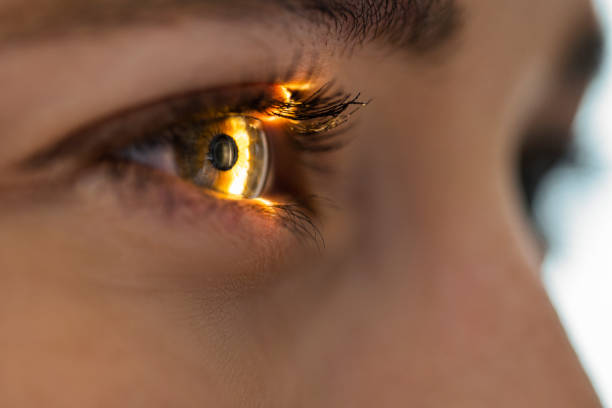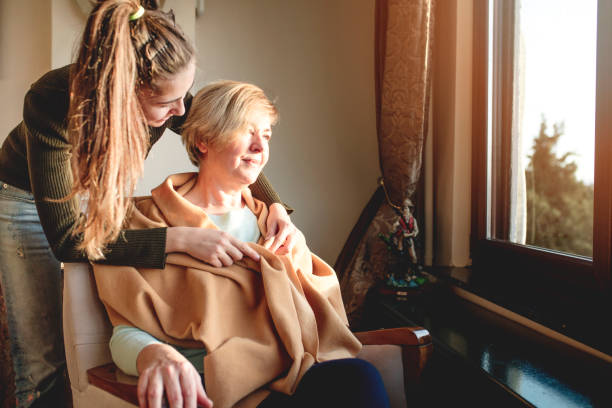Introduction

Sleep disruption is a common symptom of Parkinson's disease (PD). It can hurt patients' quality of life and their ability to manage the symptoms of PD. Recent studies have suggested that light exposure may be one way to regulate sleep patterns and improve overall outcomes for PD management.
In this blog post, we'll discuss the role of light exposure in regulating sleep patterns for Parkinson's disease management. We'll explore the current evidence on the subject and discuss potential strategies for using light to improve sleep in individuals with PD. By understanding how light exposure can help manage symptoms, we hope to empower those affected by PD to better control their condition.
What is the effect of Light Exposure on Parkinson's Disease?
Light exposure plays a key role in regulating sleep patterns for those with Parkinson's Disease. Studies indicate that insufficient daytime light exposure and excessive nighttime light exposure can lead to insomnia or sleep deprivation.
Light also affects melatonin levels, a hormone the body releases to control its sleep-wake cycle.
Research indicates that individuals with Parkinson's disease may have a better quality of sleep if they are exposed to bright light during the daytime and dim light in the evening. This could be partly due to increased melatonin production at night, encouraging restorative sleep.
It is recommended that people with Parkinson's make sure that their bedrooms are as dark as possible during the night and open curtains or blinds during the day to let in more natural light.
In addition, using blue light therapy devices is a common way for those with Parkinson's Disease to improve their sleep-wake cycle and reduce insomnia. Blue light therapy works by emitting a bright blue light, which sends signals to the brain and helps it to adjust its circadian rhythm.
The role of light exposure in managing sleep patterns associated with Parkinson's Disease
Light exposure plays a major role in managing sleep patterns associated with Parkinson's Disease. For people living with the condition, light therapy is a useful approach to manage nighttime wakefulness and enhance the quality of their sleep.
A study published by the European Neurology journal concluded that bright light exposure during late morning hours could increase the time spent in slow-wave sleep and decrease alertness during evening hours.
This result was seen in healthy individuals and those with Parkinson's Disease, demonstrating that light therapy can be a useful tool for managing nighttime sleep disruptions associated with the condition.
To improve sleep quality, one can expose themselves to bright light during the day, which resets the biological clock and increases melatonin release at night. Additionally, it helps prevent daytime fatigue caused by disrupted nighttime sleep in individuals with Parkinson's Disease.
Light exposure is also beneficial for those with Parkinson's Disease during the day, as it helps to temper the disease's symptoms. Researchers from the Cleveland Clinic conducted a study that found that one hour of daily exposure to bright light improved gait stability and posture and increased dopamine levels.
When selecting the type of light for Parkinson's Disease management, blue-enriched white light is the most effective. The journal Sleep Medicine published a study that found that individuals with Parkinson's Disease exposed to this specific type of light experienced better quality of sleep and increased alertness during the day compared to those exposed to regular cool-white light.
Overall, it is clear that light exposure can play an important role in managing sleep patterns and symptoms associated with Parkinson's Disease. By exposing oneself to blue-enriched white light during the day and engaging in bright light therapy during late morning hours, individuals with the condition can experience an improvement in their sleep quality and daytime alertness.
How light affects the body's circadian rhythms and sleep cycles
Light exposure is important in regulating circadian rhythms, the body's natural 24-hour clock that tells us when to sleep and wake. These rhythms play an important role in managing one's sleep cycle if they have Parkinson's Disease (PD). Here are some ways light exposure can help regulate sleep patterns for Parkinson's Disease management:
-
Light exposure helps reset the body's internal clock, allowing the patient to maintain regular sleep patterns.
-
Bright light during the day, alertness, and productivity while avoiding sleepiness.
-
Too much light in the evening can delay time, leading to difficulty falling asleep and maintaining sleep.
-
Natural sunlight exposure is especially important for setting the body's internal clock, providing more blue light than indoor lighting.
-
Light therapy (phototherapy) effectively treats various health issues, including Parkinson's Disease-related sleep disturbances.
-
To improve your sleep quality, try exposing yourself to bright light in the morning if you struggle with sleeping at night. This may help reset your internal clock.
-
Dark environments should be maintained at night and during naps to promote a better quality of sleep and sleep disturbances.
-
Light therapy involves exposing the patient to bright light during specific times of the day, usually in the morning, which can help reset hormones and circadian rhythms.
-
Blue wavelength light has been found to have the most beneficial effects on circadian rhythms.
Light exposure is a powerful tool that can help regulate sleep patterns in people with Parkinson's Disease and other neurological conditions. Understanding how light affects the body's circadian rhythms and sleep cycles is important to ensure proper management of sleep disturbances associated with PD.
5 Benefits of increased light exposure for PD Patients

There are many benefits to increased light exposure for people with Parkinson's disease (PD). Besides providing a sense of well-being and improved mood, light exposure can also help regulate sleep patterns.
Managing symptoms of PD is greatly affected by regular sleep. Not enough sleep may result in increased motor fluctuations, impaired judgment, decision-making, and reduced quality of life. Here are five benefits of increased light exposure for people with Parkinson's disease:
Improved sleep quality and duration
People with PD may struggle to maintain a regular sleep schedule, but increased light exposure can help reset the body's circadian rhythm, promoting regular sleeping and waking times. Regularly exposing yourself to bright lights during peak periods of wakefulness can also help promote deeper, more restorative sleep.
Reduced daytime sleepiness
People with PD may experience excessive daytime or "drowsiness" due to motor fluctuations, medications, and impaired night-time sleep. To increase alertness during the day, try exposing yourself to bright light if you feel drowsy.
Decreased stress and anxiety
Research has revealed that exposure to bright light can lower cortisol levels, a stress hormone. This is especially beneficial for individuals with PD who are more vulnerable to feelings of depression and anxiety. Increased light exposure can also help improve mood and energy levels, allowing for a more positive outlook.
Reduced risk of falls
People with Parkinson's disease are at risk for falls due to impaired balance and coordination. Increased light exposure has been shown to improve gait stability and reduce falls, making it a valuable tool for maintaining physical safety.
Improved concentration
Exposure to bright light can also help improve cognitive performance. Not only does this increased focus benefit activities such as reading and studying, but it can also help with daily tasks such as driving and completing chores.
Overall, increased light exposure can be a valuable tool in managing the symptoms of Parkinson's disease. Light exposure can enhance the quality of life for individuals with PD by improving their sleep quality and duration, reducing daytime sleepiness, lowering stress and anxiety levels, and enhancing gait stability and concentration. If you are a PD patient, talk to your doctor about the role of light exposure in regulating your sleep patterns and improving your overall health.
Light-Related Interventions for Parkinson's Patients

Light exposure plays a key role in regulating sleep patterns for Parkinson's disease management. Recent studies suggest that individuals with Parkinson's disease can benefit from light-related interventions, including timed light and melatonin administration, to better regulate their circadian rhythm. Outcomes of these interventions include improved quality of sleep and significant reductions in total sleep time, indicating that light exposure is beneficial in helping Parkinson's patients maintain healthy sleep patterns.
Strategies to maximize the amount of natural and artificial light exposure
Light exposure is essential for regulating sleep patterns in Parkinson's disease management. It helps to reset the body's internal clock, known as the circadian rhythm, which can help with problems such as delayed sleep onset and early morning awakenings. Strategies to maximize the amount of natural and artificial light exposure include:
-
Taking outdoor walks in the morning or afternoon - this can be combined with physical exercise for additional benefits
-
Utilizing bright light boxes or lamps in the home to help simulate natural outdoor lighting
-
Wearing sunglasses during the day, especially when outdoors, helps protect from overexposure to sunlight.
To help manage sleep-wake problems related to Parkinson's, consider adjusting your daily routine slightly to increase exposure to light. Doing so can support your circadian rhythm.
FAQ's
Does light therapy help Parkinson's?
Yes, light therapy can help Parkinson's patients manage their symptoms. Light exposure helps regulate the body's circadian rhythm, which is important for managing sleep patterns. Light exposure may also reduce daytime drowsiness and stress levels and improve concentration and gait stability.
How long should I be exposed to light each day?
The amount of light exposure needed will depend on your symptoms. For optimal outcomes, it is advised that you seek advice from your doctor to determine the appropriate amount and type of light exposure. Generally, it is recommended that people with Parkinson's disease receive at least 30 minutes of bright light exposure per day during peak periods of wakefulness.
Does light exposure help with other symptoms of Parkinson's disease?
Yes, light exposure can help with other symptoms of Parkinson's disease. According to research, exposure to more light can lower stress and anxiety levels and enhance mood and energy. It can also help improve cognitive performance, such as concentration and focus.
How can I use light therapy to manage my Parkinson's disease?
To manage your Parkinson's disease:
-
Consider using light therapy.
-
Discuss with your doctor the amount and type of light exposure you should have each day for the best results.
-
Incorporate this therapy into your daily routine at a specific time.
Are there any risks associated with light exposure?
Light exposure is generally a safe and effective therapy with minimal risks. Talking to your doctor about possible side effects before beginning light therapy is important. Eye damage can occur if you stare directly at a bright light source for extended periods of time, so it's important to take appropriate safety precautions when using light therapy.
Conclusion
In conclusion, light exposure is an important part of managing sleep patterns for Parkinson's disease. By increasing natural and artificial light exposure and taking the appropriate safety precautions, individuals can help support their circadian rhythm and better manage their overall symptoms. Consult your doctor for personalized guidance and assistance in using light therapy to manage Parkinson's disease. It is crucial to discuss any questions or concerns with your doctor.

